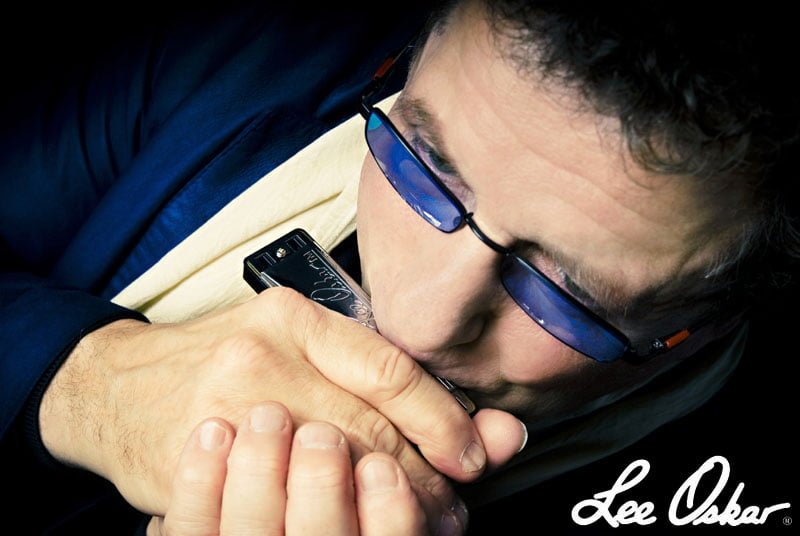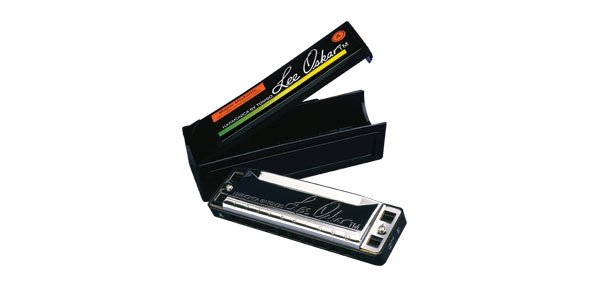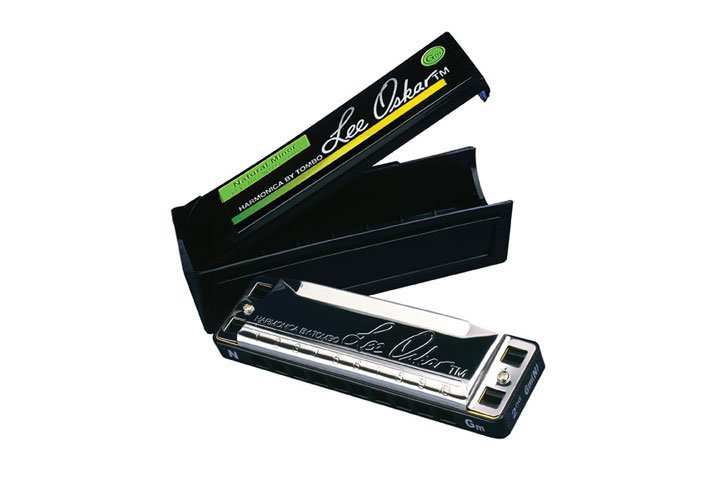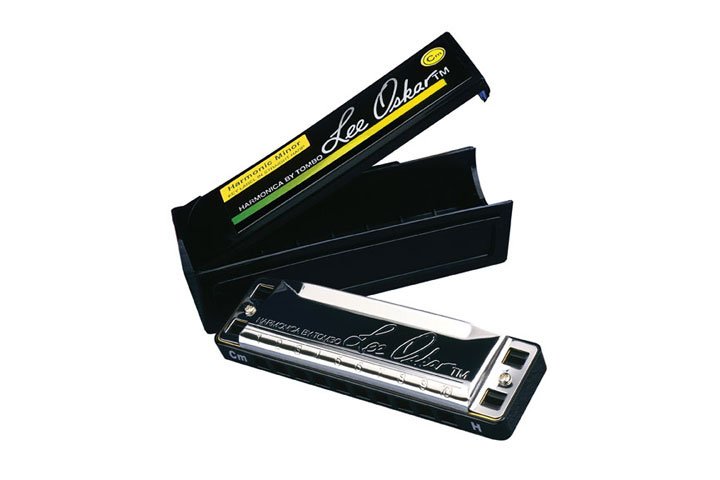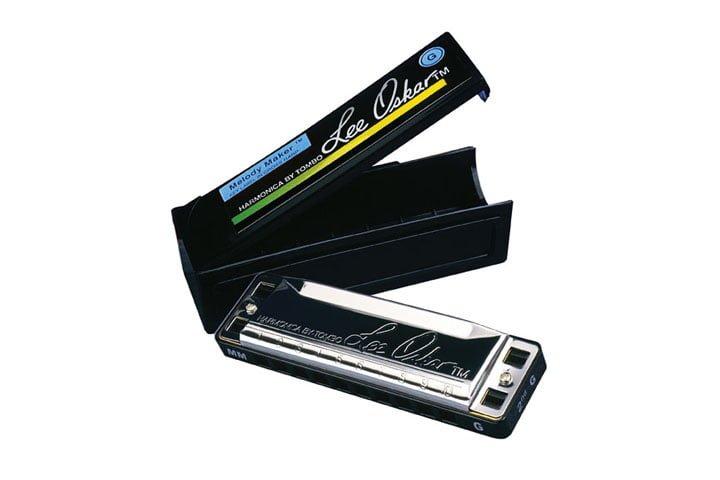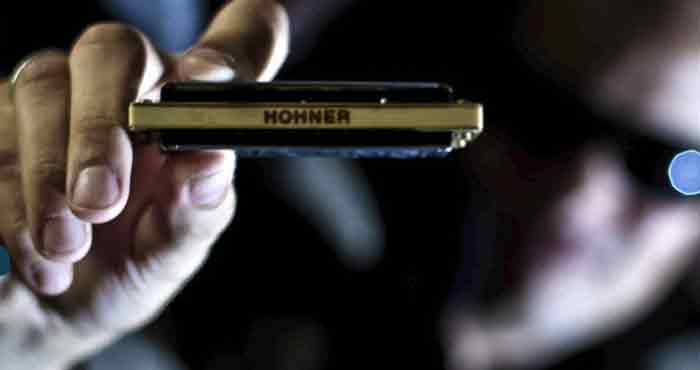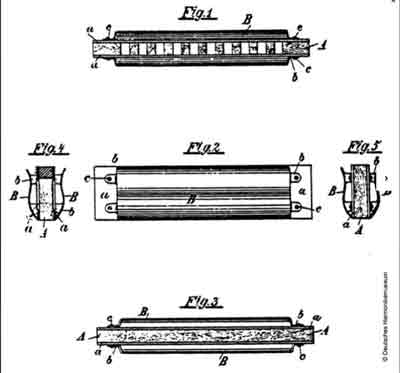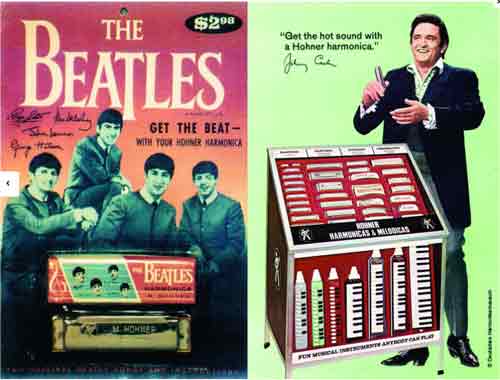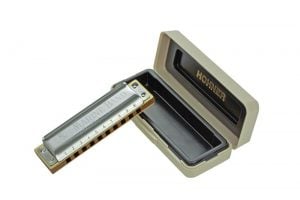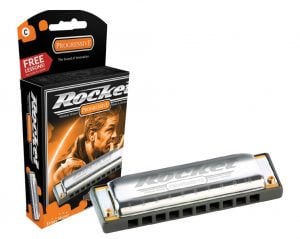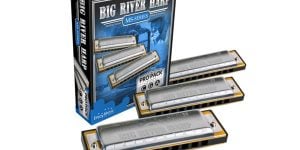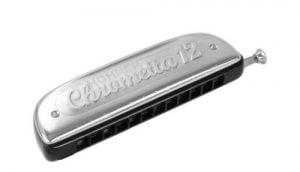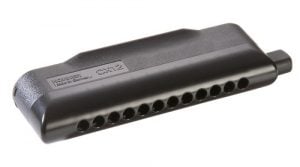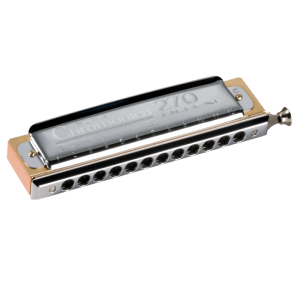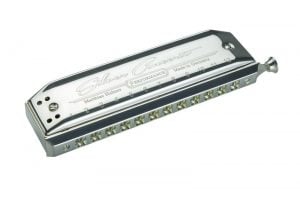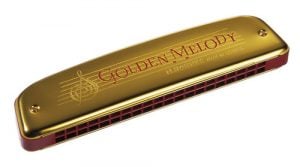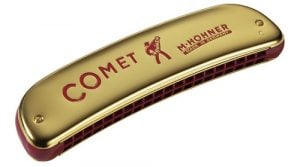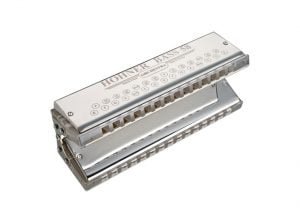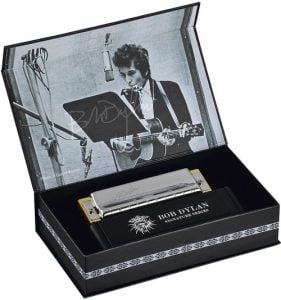In our series of buyers’ guides we look at the product ranges of the major harmonica manufacturers and explain the differences between models. This time it’s the turn of Japanese brand, Suzuki.
Not a Motorbike Manufacturer
In the US and Britain in the 1970s, the conglomerate reigned supreme. Companies like ITT were so diversified that their interests could include such bizarrely dissimilar areas as baked goods, telephony and forest products.
By the 1980s, this level of diversification had become deeply unfashionable, and most western companies divested themselves of their more outlandish subsidiaries in order to focus on their core competencies.
This trend towards ‘focus only on what you’re good at’ did not, however, have much effect in Japan, where the keiretsu – a set of companies with interlocking shareholdings, which, in many ways resemble conglomerates – is still the pre-eminent type of major corporation.
It’s slightly surprising, then, to find that Suzuki Musical Instruments is not part of a keiretsu itself and has no connection with Suzuki Motors. Unlike one of Japan’s other musical instrument manufacturers – Yamaha – which is part of a larger company producing a mystifyingly large range of products, from motorbikes to pianos, Suzuki is a standalone company that focuses on instruments alone. And its most popular instrument (and the one with which its name was made) just happens to be the harmonica.
A Brief History
Manji Suzuki, the founder of the company, began making Suzuki harmonicas by hand, more than 70 years ago, in a small rented room in Sumiyoshi. The business expanded rapidly in the immediate post-war period, helped to some extent by the Japanese Ministry of Education’s policy of stipulating the use of simple, low cost harmonicas to teach music in primary and secondary schools.
The 1960s saw the company diversify a little with production of the keyboard harmonica, which again proved exceptionally popular in the education sector. This experience with keyboard-based instruments partially influenced Suzuki’s decision to acquire the Hammond Organ Company in 1989, which it still owns today.
Suzuki in 2017 produces a range of musical instruments, from xylophones to electric pianos, but it’s probably safe to say that the harmonica remains the instrument for which it is most famous. Let’s take a look at its range and explain the fundamental differences between models.
Diatonic Suzuki Harmonicas
Easy Rider (EZR-20)

This is a very reasonably priced, Chinese-made diatonic harmonica designed for the entry level market. Despite its low price it is robust and durable. Available in C, D and G.
Manji (M-20)
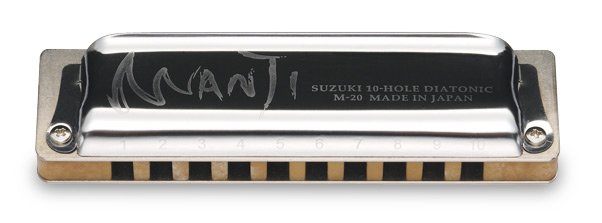
The Manji is a Japanese-made, mid to upper-end diatonic harmonica, which is available in a large range of keys and tunings, including natural minor and country.
The wood/resin composite comb combines the tonal qualities of a wooden comb with the non-absorbency features and durability of a plastic comb. The reeds are high quality phosphor bronze. A very high quality harp for those looking for the resonance and feel of a wooden comb but without the potential swelling issues.
Blues Master (MR-250)
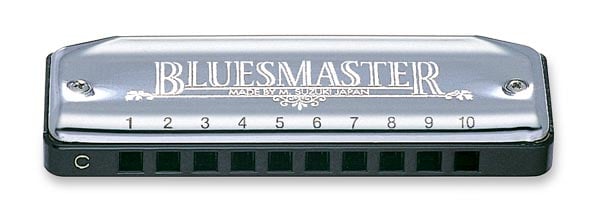
The Blues Master is the equivalent Suzuki model to the Hohner Special 20 and hits a similar price point.
Made in Japan with an ABS plastic comb and phosphor bronze reeds, it’s ideally suited, as the name suggests, to blues playing, and allows easy bending of notes. Available in 12 major keys.
Folk Master (1072)
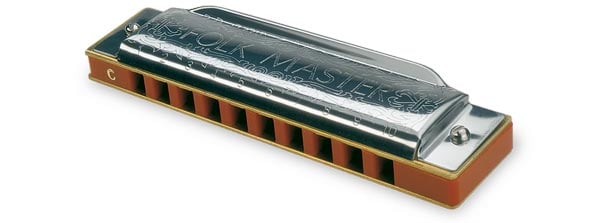
This is another entry level harmonica, manufactured in China and featuring laser tuned reeds and a moulded plastic body. This harp has a particularly mellow tone, which makes it most suitable for folk and country music. Available in 12 major keys.
Harp Master MR-200
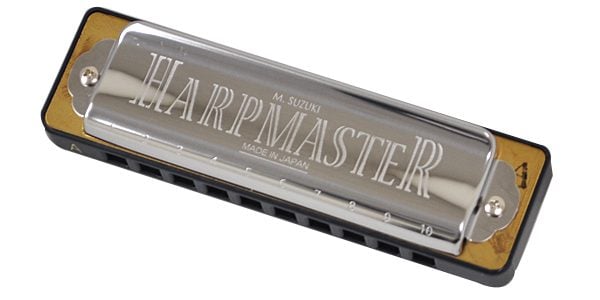
The Harp Master sits slightly below the Blues Master in the Suzuki range, but features a similar construction and, like the Blues Master, is made in Japan. The main difference is the brass reeds on the Harp Master, which lend it subtly different tonal qualities. Available in 12 major keys.
Pro Master (MR-350)
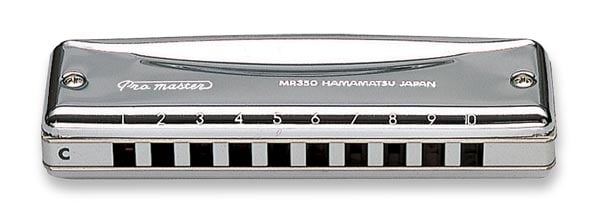
This is one of Suzuki’s most popular models. Featuring an aluminium alloy comb that gives it a unique sound and response. Available in 12 major keys plus high G and low F. Made in Japan.
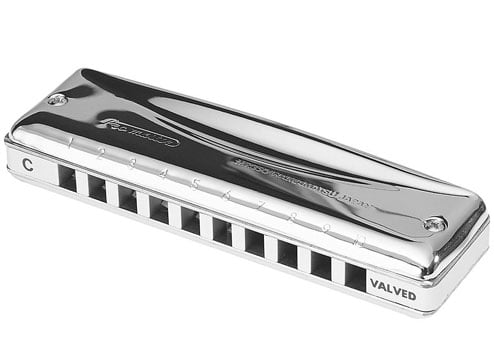
Featuring the same construction as the standard Pro Master, but with a valve system which circulates air to allow note bending in the blow as well as the draw cycle. Made in Japan and available in 12 major keys as well as high G and low F.
Pro Master Gold Valved (MR-350GV)
This harp features the same design and construction as the MR-250V, but the cover has been gold plated for a uniquely opulent look. Made in Japan and available in 12 major keys as well as high G and low F.
Pure Harp (MR-550)
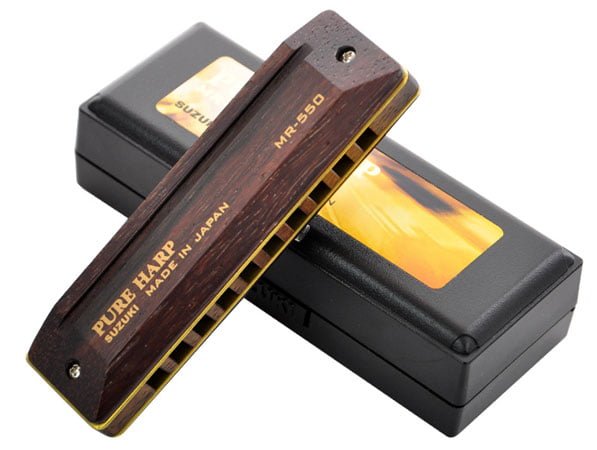
FireBreath (MR-500)
Features a rosewood comb for a warm, bluesy sound, but has the same body as the MR350, which facilitates tongue blocking. Made in Japan and available in 12 major keys as well as high G and low F.
Overdrive (MR-300)
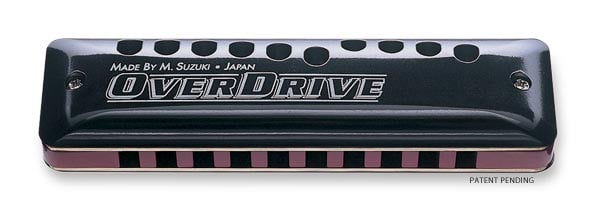
The Overdrive has a design that is unique to Suzuki: it has separate air holes at the back of the case that when blocked with a finger increase air flow over the reeds, making it easier to overblow and overbend. Made in Japan and available in 12 major keys as well as high G and low F.
Suzuki Pipe Humming
This chrome plated harmonica has a unique design that enables vibrato via the use of an extension tube that can be switched for left or right-handed playing.
Made in Japan and available in 8 keys (C, C#, A, G, D, Am, Gm, and Dm).
Suzuki Fabulous F20E and F20J
These two models are at the upper end of Suzuki’s diatonic range. The F20E is tuned to equal temperament, whilst the F20J is tuned to just temperament. The latter tuning is beloved of folk players and some blues players due to the very full sounding chords it enables.
These harps both feature silver-plated brass combs and cases and phosphor bronze reeds. As expected at this price point, the build quality is extremely high and the tolerances supremely precise. Made in Japan and available in 12 major keys as well as high G and low F.
Suzuki Olive (C-20)
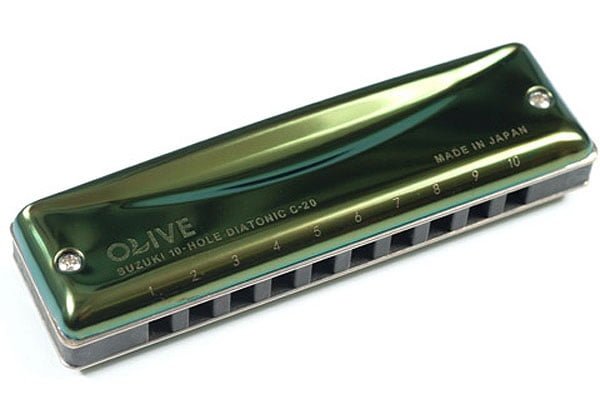
This is the sister harmonica to the Manji, and features the same composite comb. The main difference is the Pro Master style cover plates, which lend it a clear, warm sound, most suited to pop and jazz styles. Made in japan and available in 14 major keys.
Chromatic Suzuki Harmonicas
Chromatix
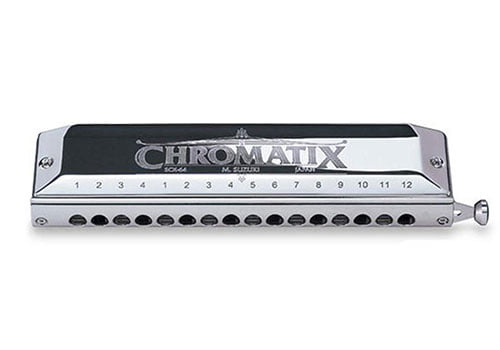
This chromatic harp is available in a range of sizes, from 12 to 16 holes. Featuring an ABS body and chrome-plated brass cover plates, it’s precision made in Japan and is extremely airtight.
Sirius
This range of harps, available in a number of configurations, from 12 to 16 holes, is a step up in price from the Chromatix. Based on the Fabulous design, it has a warm and expressive sound. Made in Japan.
Fabulous
This is one of Suzuki’s top end chromatic models and has the quality and feel that matches its price. The cover plates and body are silver plated brass and the mouthpiece is gold plated. Made in Japan and available in 12, 14 and 16 hole models.
Grégoire Maret Signature Models
These two models share the same design, but differ in their construction. The G48 features brass coverplates,whilst the G48W uses rosewood for a subtly richer sound and a different feel in the hand. Made in Japan.
Suzuki SCT-128 Chromatic Tremolo
This is a 16 hole tremolo/chromatic hybrid, with a gold-plated mouthpiece, chrome plated brass cover plates and an ABS body. The reeds are phosphor bronze. Made in Japan.
Tremolo Suzuki Harmonicas
Humming Mate
This is a pocket-sized tremolo harmonica with 13 double holes, an ABS body and stainless steel cover plates. Made in Japan.
Winner Series
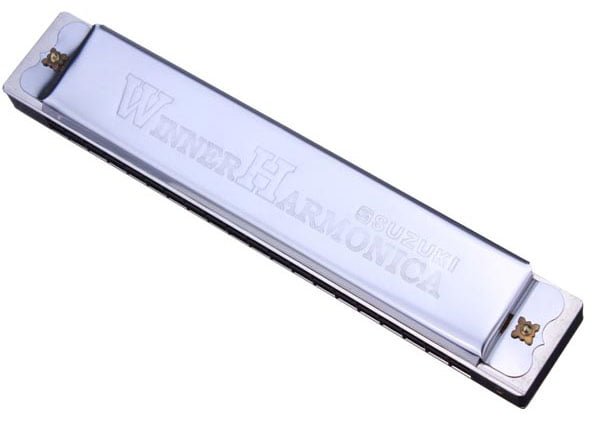
These popular entry level tremolo harmonicas are available in 16, 20 and 24 double hole sizes and feature ABS bodies and stainless steel cover plates.
SU Series
The SU Series is available in a wide range of sizes and configurations, including an ‘M’ model with a maple comb for a vintage sound and feel. Cover plates are either stainless steel or chrome plated brass.
SBH-21 Baritone
This tremolo harmonica is pitched one octave lower than the standard 21 hole instruments, giving it unusual warmth and depth. Features an ABS body with brass cover plates. Available ion C and C#.

